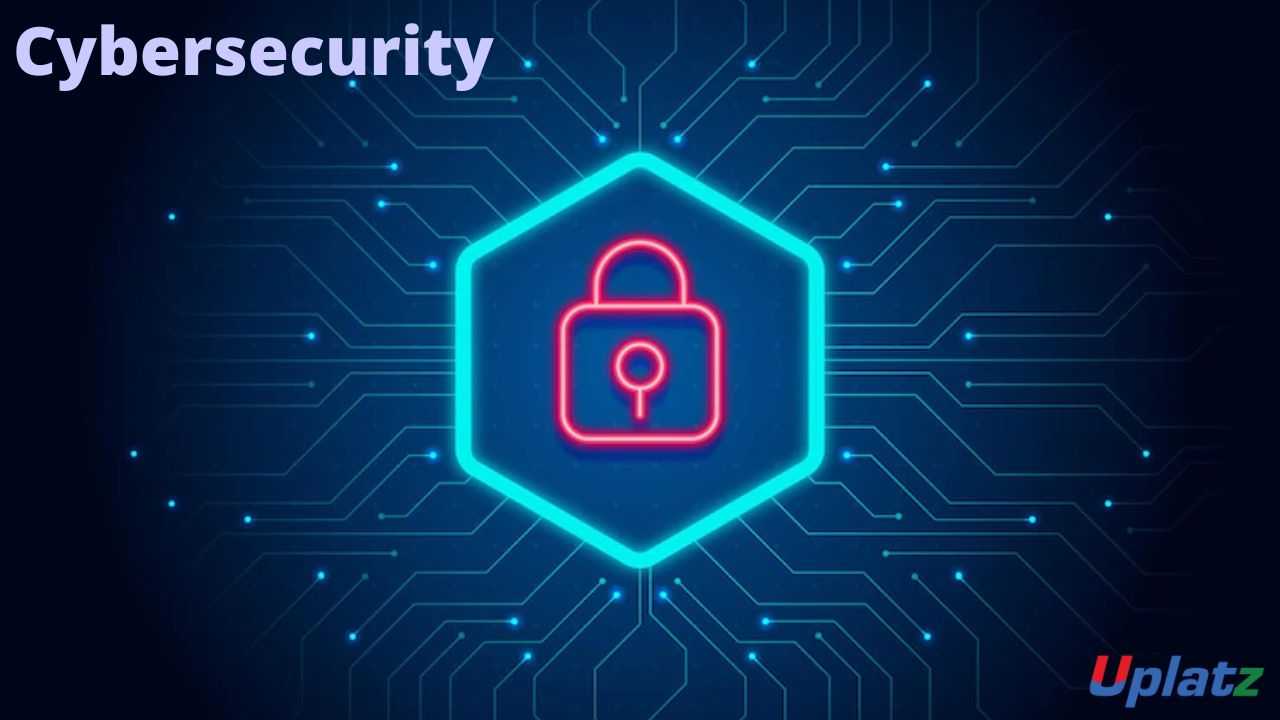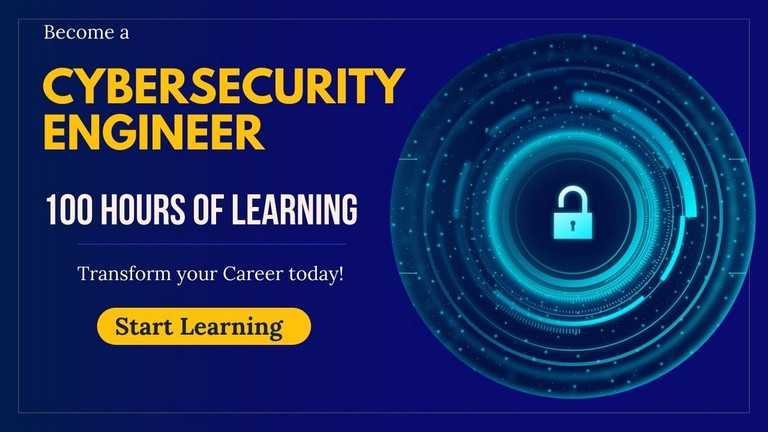QRadar
Become a certified SIEM expert with hands-on QRadar training and enhance your cybersecurity career with real-time threat detection and compliance.
Course Duration: 10 Hours
Preview QRadar course
Price Match Guarantee Full Lifetime Access Access on any Device Technical Support Secure Checkout Course Completion Certificate 92% Started a new career
BUY THIS COURSE (
92% Started a new career
BUY THIS COURSE (GBP 12 GBP 29 )-
 83% Got a pay increase and promotion
83% Got a pay increase and promotion
New & Hot
Cutting-edge
Great Value
Coming soon (2026)
Students also bought -
-

- Career Accelerator - Head of IT Security
- 200 Hours
- GBP 32
- 316 Learners
-

- Cybersecurity in a nutshell
- 2 Hours
- GBP 12
- 21 Learners
-

- Career Path - Cybersecurity Engineer
- 100 Hours
- GBP 32
- 1240 Learners

QRadar – Master Security Intelligence and Threat Detection – Online Course
IBM QRadar SIEM (Security Information and Event Management) is a premier solution used by organizations across the world to detect, prioritize, and respond to security threats in real time. This course—QRadar: Master Security Intelligence and Threat Detection—is a comprehensive, step-by-step learning journey designed for security analysts, IT professionals, and cybersecurity enthusiasts eager to build expertise in security operations, threat intelligence, and log management using IBM QRadar.
QRadar stands out in the crowded SIEM landscape due to its deep packet inspection, advanced correlation engine, and automated threat intelligence. Unlike traditional SIEM tools that often generate noise with a high volume of uncontextualized alerts, QRadar focuses on delivering actionable insights by collecting data from thousands of log sources, normalizing the data, applying rule-based correlations, and mapping events against the MITRE ATT&CK framework. The result? A drastically reduced Mean Time to Detect (MTTD) and Mean Time to Respond (MTTR) for security incidents.
This course begins with a foundational understanding of QRadar's architecture and gradually introduces more complex use cases such as offense investigation, log source onboarding, AQL (Advanced Query Language), rule creation, and custom use case development. The hands-on labs and real-world examples used throughout the course prepare learners to work effectively in a Security Operations Center (SOC) environment.
Whether you're planning to pursue a career in cybersecurity or enhance your existing role with SIEM knowledge, this course covers every critical aspect—from log ingestion and parsing to building dashboards, rules, and reports—with the aim of transforming learners into confident and competent QRadar analysts.
Why QRadar? What Makes It Unique?
- Integrated Threat Intelligence: QRadar includes X-Force Threat Intelligence, allowing analysts to enrich data with external threat feeds.
- Offense Correlation Engine: Its AI-driven correlation engine can automatically group related events and provide context to reduce alert fatigue.
- Scalability and Modular Design: Whether you're protecting a small enterprise or a global corporation, QRadar adapts to your environment.
- Automatic Log Source Detection: QRadar supports auto-detection and auto-configuration of many standard log sources, reducing setup time.
- Intuitive UI and Search Capabilities: With the use of AQL, QRadar allows analysts to query massive datasets for patterns, anomalies, and indicators of compromise (IOCs) efficiently.
This course uses a hands-on methodology, where every theoretical concept is paired with a practical lab or exercise. Learners will use the QRadar Community Edition in a virtualized environment to simulate real-world scenarios.
Who Should Take This Course?
- Security Analysts and SOC Professionals
- Network and System Administrators
- IT Security Engineers
- Cybersecurity Students and Enthusiasts
- Professionals preparing for IBM Certified QRadar Administrator or Analyst certification
Course/Topic 1 - Coming Soon
-
The videos for this course are being recorded freshly and should be available in a few days. Please contact info@uplatz.com to know the exact date of the release of this course.
Course Objectives Back to Top
By the End of the Course, You Will Be Able To:
-
Understand and configure QRadar architecture and components
-
Onboard and normalize log sources
-
Write and deploy correlation rules
-
Investigate offenses and incidents
-
Use AQL to query event and flow data
-
Build dashboards, reports, and custom use cases
-
Prepare for QRadar certification exams and job interviews
Course Syllabus Back to Top
QRadar Course Syllabus
Module 1: Introduction to SIEM and QRadar
- What is SIEM?
- QRadar vs other SIEMs
- QRadar architecture and components
Module 2: Deployment and Setup
- Installing QRadar Community Edition
- Network configuration
- Licensing and system health
Module 3: Log Sources and Data Collection
- Adding log sources
- DSMs and protocol configurations
- Auto-discovery and log parsing
Module 4: Event and Flow Data
- Event flow vs network flow
- Event normalization and categorization
- Troubleshooting log ingestion
Module 5: Rules and Offense Management
- Rule types and logic
- Building custom rules
- Offense correlation and tuning
Module 6: Using AQL for Analysis
- Introduction to AQL
- Writing queries for event/flow data
- Saving and scheduling searches
Module 7: Dashboards and Reports
- Building custom dashboards
- Visualizations and widgets
- Scheduled reports and alerts
Module 8: Case Management and Workflow
- Case creation and enrichment
- Integration with SOAR
- Workflow and escalation
Module 9: Real-World Use Cases
- Malware and ransomware detection
- Insider threat use case
- Privilege escalation alerting
Module 10: Maintenance and Performance
- System backups and updates
- Performance tuning
- High availability
Certification Back to Top
Upon completion of this course, you’ll receive a Certificate of Completion from Uplatz, validating your skills in IBM QRadar and SIEM operations. This course also prepares you for official IBM certifications like:
- IBM Certified SOC Analyst – QRadar
- IBM QRadar SIEM Admin Certification
Earning a QRadar certification not only adds value to your resume but also boosts credibility when applying for roles in security operations, threat detection, and incident response teams.
Career & Jobs Back to Top
With growing threats in cyberspace, organizations need skilled security professionals more than ever. QRadar proficiency is in high demand across industries such as finance, healthcare, government, and tech. Completing this course opens doors to roles such as:
- SOC Analyst
- Cybersecurity Specialist
- QRadar Administrator
- SIEM Engineer
- Threat Intelligence Analyst
Professionals trained in QRadar can expect to work in fast-paced environments where they play a critical role in defending against cyberattacks. The course equips learners not only with technical skills but also with analytical thinking, making them valuable assets to any cybersecurity team.
Interview Questions Back to Top
1. What is QRadar?
IBM QRadar is a Security Information and Event Management (SIEM) platform that collects, normalizes, correlates, and analyzes security data to detect and respond to threats in real time.
IBM QRadar is a Security Information and Event Management (SIEM) platform that collects, normalizes, correlates, and analyzes security data to detect and respond to threats in real time.
2. How does QRadar collect log data?
QRadar uses log sources like syslog, JDBC, LEA, and REST APIs to ingest data from various systems and devices.
QRadar uses log sources like syslog, JDBC, LEA, and REST APIs to ingest data from various systems and devices.
3. What is an offense in QRadar?
An offense is an alert generated when correlation rules detect suspicious activity, aggregating related events and flows for investigation.
An offense is an alert generated when correlation rules detect suspicious activity, aggregating related events and flows for investigation.
4. Explain the QRadar architecture.
QRadar comprises components like Event Collector, Event Processor, Flow Processor, and Console. These work together to ingest, process, and analyze data.
QRadar comprises components like Event Collector, Event Processor, Flow Processor, and Console. These work together to ingest, process, and analyze data.
5. What is a DSM in QRadar?
A Device Support Module (DSM) is a parser that helps QRadar normalize data from different log sources.
A Device Support Module (DSM) is a parser that helps QRadar normalize data from different log sources.
6. What is AQL and how is it used?
AQL (Ariel Query Language) is used to query data in QRadar’s Ariel database for threat hunting, offense investigation, and reporting.
AQL (Ariel Query Language) is used to query data in QRadar’s Ariel database for threat hunting, offense investigation, and reporting.
7. How do correlation rules work in QRadar?
Correlation rules define conditions based on event attributes. If these conditions are met, QRadar generates an offense.
Correlation rules define conditions based on event attributes. If these conditions are met, QRadar generates an offense.
8. What are reference sets in QRadar?
Reference sets are dynamic or static collections of data used in rules—for example, blacklisted IPs or suspicious user accounts.
Reference sets are dynamic or static collections of data used in rules—for example, blacklisted IPs or suspicious user accounts.
9. How is threat intelligence integrated in QRadar?
QRadar integrates threat intelligence feeds like IBM X-Force, which enrich events with known indicators of compromise.
QRadar integrates threat intelligence feeds like IBM X-Force, which enrich events with known indicators of compromise.
10. How do you tune QRadar to reduce false positives?
By adjusting rule thresholds, refining reference sets, suppressing noisy log sources, and modifying rule logic to focus on critical behaviors.
By adjusting rule thresholds, refining reference sets, suppressing noisy log sources, and modifying rule logic to focus on critical behaviors.
Course Quiz Back to Top
FAQs
Back to Top
Q1. What are the payment options?
A1. We have multiple payment options:
1) Book your course on our webiste by clicking on Buy this course button on top right of this course page
2) Pay via Invoice using any credit or debit card
3) Pay to our UK or India bank account
4) If your HR or employer is making the payment, then we can send them an invoice to pay.
Q2. Will I get certificate?
A2. Yes, you will receive course completion certificate from Uplatz confirming that you have completed this course with Uplatz. Once you complete your learning please submit this for to request for your certificate https://training.uplatz.com/certificate-request.php
Q3. How long is the course access?
A3. All our video courses comes with lifetime access. Once you purchase a video course with Uplatz you have lifetime access to the course i.e. forever. You can access your course any time via our website and/or mobile app and learn at your own convenience.
Q4. Are the videos downloadable?
A4. Video courses cannot be downloaded, but you have lifetime access to any video course you purchase on our website. You will be able to play the videos on our our website and mobile app.
Q5. Do you take exam? Do I need to pass exam? How to book exam?
A5. We do not take exam as part of the our training programs whether it is video course or live online class. These courses are professional courses and are offered to upskill and move on in the career ladder. However if there is an associated exam to the subject you are learning with us then you need to contact the relevant examination authority for booking your exam.
Q6. Can I get study material with the course?
A6. The study material might or might not be available for this course. Please note that though we strive to provide you the best materials but we cannot guarantee the exact study material that is mentioned anywhere within the lecture videos. Please submit study material request using the form https://training.uplatz.com/study-material-request.php
Q7. What is your refund policy?
A7. Please refer to our Refund policy mentioned on our website, here is the link to Uplatz refund policy https://training.uplatz.com/refund-and-cancellation-policy.php
Q8. Do you provide any discounts?
A8. We run promotions and discounts from time to time, we suggest you to register on our website so you can receive our emails related to promotions and offers.
Q9. What are overview courses?
A9. Overview courses are 1-2 hours short to help you decide if you want to go for the full course on that particular subject. Uplatz overview courses are either free or minimally charged such as GBP 1 / USD 2 / EUR 2 / INR 100
Q10. What are individual courses?
A10. Individual courses are simply our video courses available on Uplatz website and app across more than 300 technologies. Each course varies in duration from 5 hours uptop 150 hours.
Check all our courses here https://training.uplatz.com/online-it-courses.php?search=individual
Q11. What are bundle courses?
A11. Bundle courses offered by Uplatz are combo of 2 or more video courses. We have Bundle up the similar technologies together in Bundles so offer you better value in pricing and give you an enhaced learning experience.
Check all Bundle courses here https://training.uplatz.com/online-it-courses.php?search=bundle
Q12. What are Career Path programs?
A12. Career Path programs are our comprehensive learning package of video course. These are combined in a way by keeping in mind the career you would like to aim after doing career path program. Career path programs ranges from 100 hours to 600 hours and covers wide variety of courses for you to become an expert on those technologies.
Check all Career Path Programs here https://training.uplatz.com/online-it-courses.php?career_path_courses=done
Q13. What are Learning Path programs?
A13. Learning Path programs are dedicated courses designed by SAP professionals to start and enhance their career in an SAP domain. It covers from basic to advance level of all courses across each business function. These programs are available across SAP finance, SAP Logistics, SAP HR, SAP succcessfactors, SAP Technical, SAP Sales, SAP S/4HANA and many more
Check all Learning path here https://training.uplatz.com/online-it-courses.php?learning_path_courses=done
Q14. What are Premium Career tracks?
A14. Premium Career tracks are programs consisting of video courses that lead to skills required by C-suite executives such as CEO, CTO, CFO, and so on. These programs will help you gain knowledge and acumen to become a senior management executive.
Q15. How unlimited subscription works?
A15. Uplatz offers 2 types of unlimited subscription, Monthly and Yearly.
Our monthly subscription give you unlimited access to our more than 300 video courses with 6000 hours of learning content. The plan renews each month. Minimum committment is for 1 year, you can cancel anytime after 1 year of enrolment.
Our yearly subscription gives you unlimited access to our more than 300 video courses with 6000 hours of learning content. The plan renews every year. Minimum committment is for 1 year, you can cancel the plan anytime after 1 year.
Check our monthly and yearly subscription here https://training.uplatz.com/online-it-courses.php?search=subscription
Q16. Do you provide software access with video course?
A16. Software access can be purchased seperately at an additional cost. The cost varies from course to course but is generally in between GBP 20 to GBP 40 per month.
Q17. Does your course guarantee a job?
A17. Our course is designed to provide you with a solid foundation in the subject and equip you with valuable skills. While the course is a significant step toward your career goals, its important to note that the job market can vary, and some positions might require additional certifications or experience.
Remember that the job landscape is constantly evolving. We encourage you to continue learning and stay updated on industry trends even after completing the course. Many successful professionals combine formal education with ongoing self-improvement to excel in their careers. We are here to support you in your journey!
Q18. Do you provide placement services?
A18. While our course is designed to provide you with a comprehensive understanding of the subject, we currently do not offer placement services as part of the course package. Our main focus is on delivering high-quality education and equipping you with essential skills in this field.
However, we understand that finding job opportunities is a crucial aspect of your career journey. We recommend exploring various avenues to enhance your job search:
a) Career Counseling: Seek guidance from career counselors who can provide personalized advice and help you tailor your job search strategy.
b) Networking: Attend industry events, workshops, and conferences to build connections with professionals in your field. Networking can often lead to job referrals and valuable insights.
c) Online Professional Network: Leverage platforms like LinkedIn, a reputable online professional network, to explore job opportunities that resonate with your skills and interests.
d) Online Job Platforms: Investigate prominent online job platforms in your region and submit applications for suitable positions considering both your prior experience and the newly acquired knowledge. e.g in UK the major job platforms are Reed, Indeed, CV library, Total Jobs, Linkedin.
While we may not offer placement services, we are here to support you in other ways. If you have any questions about the industry, job search strategies, or interview preparation, please dont hesitate to reach out. Remember that taking an active role in your job search process can lead to valuable experiences and opportunities.
Q19. How do I enrol in Uplatz video courses?
A19. To enroll, click on "Buy This Course," You will see this option at the top of the page.
a) Choose your payment method.
b) Stripe for any Credit or debit card from anywhere in the world.
c) PayPal for payments via PayPal account.
d) Choose PayUmoney if you are based in India.
e) Start learning: After payment, your course will be added to your profile in the student dashboard under "Video Courses".
Q20. How do I access my course after payment?
A20. Once you have made the payment on our website, you can access your course by clicking on the "My Courses" option in the main menu or by navigating to your profile, then the student dashboard, and finally selecting "Video Courses".
Q21. Can I get help from a tutor if I have doubts while learning from a video course?
A21. Tutor support is not available for our video course. If you believe you require assistance from a tutor, we recommend considering our live class option. Please contact our team for the most up-to-date availability. The pricing for live classes typically begins at USD 999 and may vary.









